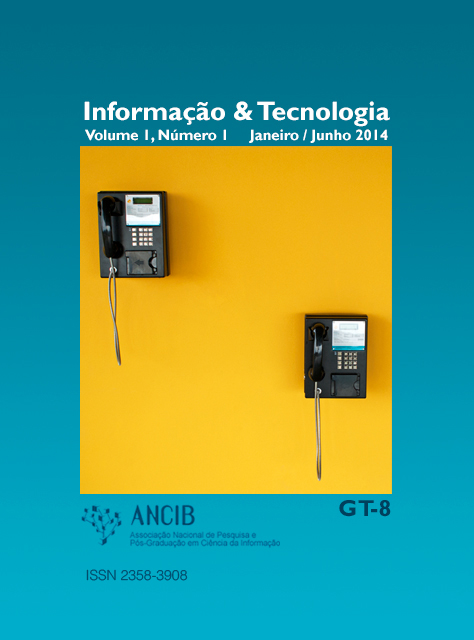Information Design, converging languages and complexity in the social web and digital environment of Facebook
Abstract
The design, through language that puts into action, allows to think the world: "[...] I think, therefore I am" (Descartes). Design allows you to view, plan, create. Added to computer technologies, design may play a role of feedback in the world of representations in which we live. In the 1940s, Ladislav Sutnar founded Information Design as a discipline, based on the prevalence of functionality over aesthetics, in order to control and organize information to communicate it effectively. Information and Communication Technologies contributed to the development of graphics, which, in electronic media can migrate from an abstract and symbolic interface (written page) to an iconic realistic interface (the screen) constituted by simulation and elements of imagery language. Systems of converging sharing networks propose technical and technological challenges that need to be addressed in order to be effective as builders of collective knowledge and face the challenges of socio-technical character. to think Converging Design in its current stage on the Internet, we consider the digital environment of Facebook, still growing, but with 500 million users and a growing rate of about 100 million new users every six months. This study considers the Facebook environment with two types of convergence we refer to as "Interface Structure" and "¿Super structure? - Design and Culture". We seek to consider the cultural changes resulting from convergent design environments. The media hybridization and hybridization subject/media may conspire and create systemic emergencies. Before such emergencies, our perception is the emergence of a progressive rebalancing of the converged system by metamidiatic cultural formations, i.e., resulting from the confluence of media and their languages, but independent of them already, auto-born. We can study the subjects that may lead us to a conscious use of the environment, a better human relationship, a better understanding of ourselves and the world. The design can be learned as a discipline, language, technology and form of reaction to our limits. It can also be associated to ICT strategically to our survival as a species.
Downloads
References
BAUMAN, Z. Liquid Modernity. Cambridge: Polity Press. 2000 .
BENJAMIN, W. The work of art in the age of mechanical reproduction. New York:Classic Books America, 2009 .
DESCARTES, R. A Discourse on Method at Project Guttenberg. Disponível: http://www.gutenberg.org/ebooks/59. Acesso: 24.06.2014.
GARRET, J J. The elements of user experience: user-centered design for the web. New York: Aiga, 2003
LANGACKER, R. Foundations of cognitive grammar, vol. 1: theoretical prerequisites. Stanford: Stanford University Press, 1987.
LEGANZA, G. Topic overview: Information architecture. Forrester
Research. 2010. Disponível em: http://
www.forrester.com/rb/Research/topic_overview_information_architecture/q/id/55951/t/2.
MCLUHAN, M.. Understanding Media: The Extensions of Man. Cambridge: The MIT Press, 1994. Print.
O´REILLY,T. What Is Web 2.0: Design Patterns and Business Models for the Next Generation of Software.
Disponível: http://oreilly.com/web2/archive/what-is-web-20.html.
Acesso: 24.06.2014.
OLIVEIRA, J.A.D.B; JORENTE, M.J.V. Perspectivas para o design da informação no âmbito da Ciência da Informação. Anais do XIV ENANCIB. 2013.
TURNER, M. The Artful Mind: Cognitive Science and the Riddle of Human Creativity. Oxford: University Press, 2006.
__________The Origin of Ideas: Blending, Creativity, and the Human Spark. Oxford: University Press, 2014.
TURKLE, S. Alone Together: Why We Expect More from Technology and Less from Each Other. New York:Basic Books. 2011.
______________ The second Self: Computers and the Human Spirit. Massachussets: MIT Press. 1984.
WURMAN, R.S; BRADFORD, P; eds. Information Architects. Zurich, Switzerland: Graphis Press; 1996.
JACOBSON, R. E. Information design. Cambridge: MIT Press, 1999.
JORENTE, M. J. V. Ciência da Informação: mídias e convergência de linguagens na Web. São Paulo: Cultura Acadêmica, 2012.
PONTIS, S. 20 Information Design Milestones. Mapping Complex Information. Disponível em: <http://sheilapontis.wordpress.com/2012/01/16/20-information-design-milestones/>. Acesso em: 15 jul. 2013.



